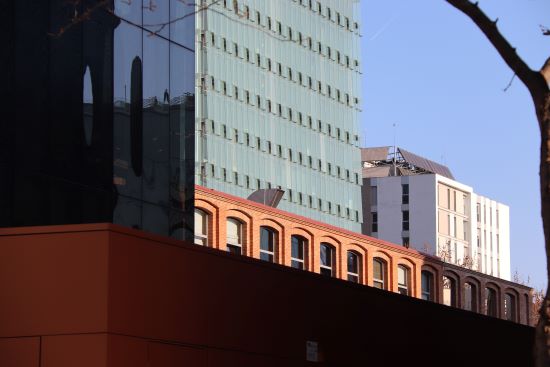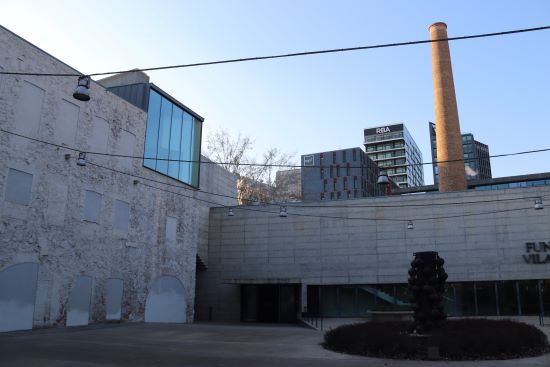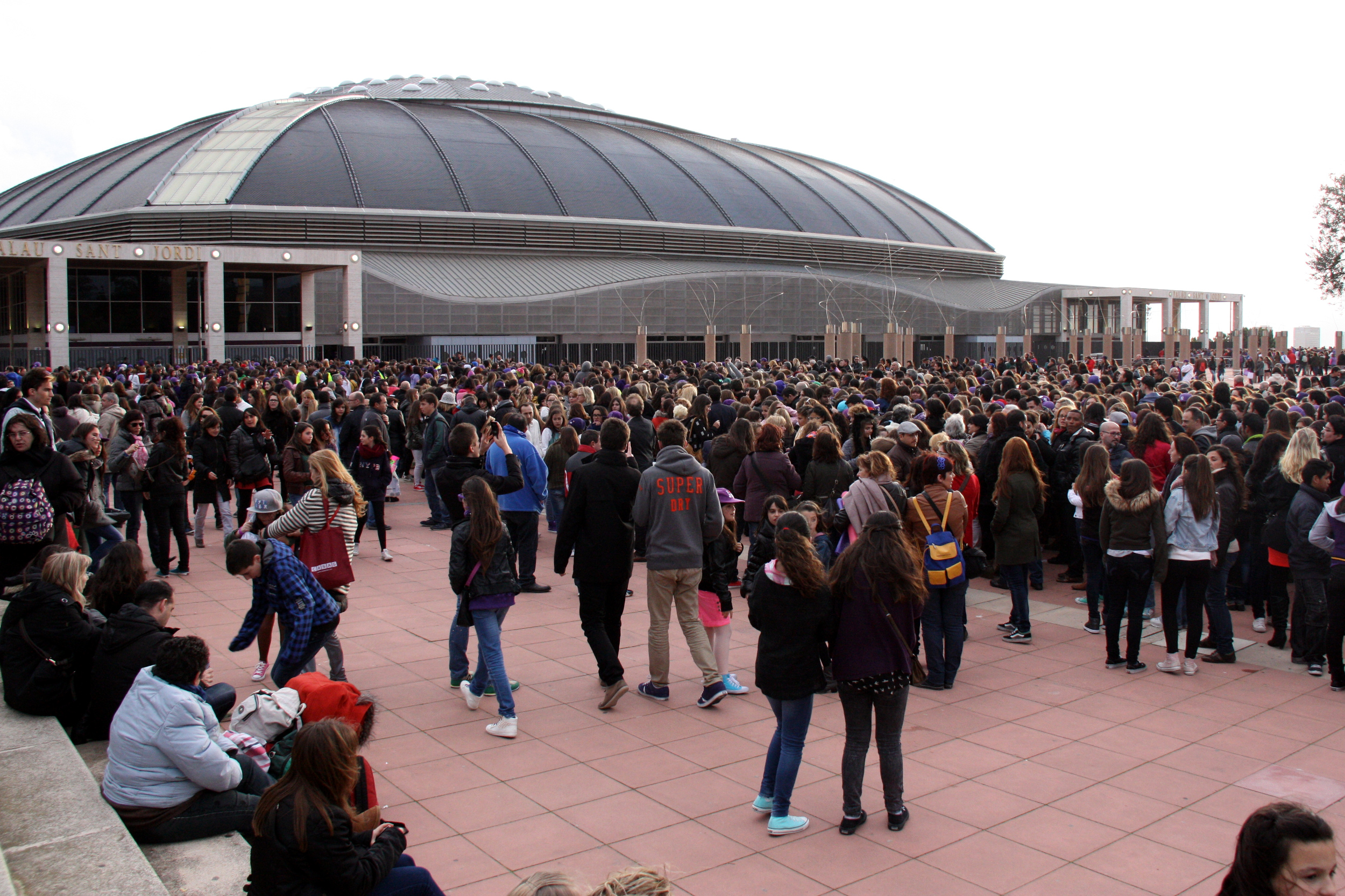22@, where contemporary architecture meets Barcelona’s old industrial heritage
The neighborhood for innovation, creativity, and design combines old and new construction ideas

There are around 1.6 million inhabitants in Barcelona. All of them are packed between the mountains of Collserola, the Besòs and the Llobregat rivers, and the Mediterranean sea.
Every time someone looks at a map of the city, they will notice a grid formed by streets and houses known as the Eixample, and then, near the Besòs river and the coast, they’ll see a developing area called 22@.
The 22@ district is the city’s hub for innovation, creativity, design, and technology. But it is also one of the places with the most contemporary architecture buildings in Barcelona.
Guiding Architects Barcelona is a company created by architects that provides tours around the city while explaining some of the buildings’ most interesting secrets.
One of their tours is around 22@, and organization member Stefanie Herr and president Lorenzo Kárász met with Catalan News in Plaça de les Glòries for a visit. They are both architects and have been working together for a long time.
Plaça de les Glòries used to be a highway intersection of Barcelona’s main roads: Diagonal avenue, Gran Via de les Corts Catalanes, and Meridiana avenue.
Right now, it is home to a park and the Disseny hub, a museum that resembles a stapler that was built in 2013 by the late Oriol Bohigas. The building has been included as part of Catalonia’s Architectural Heritage List.

The district is now a modern-looking area but in the past, the neighborhood of Poble Nou, where 22@ is located, used to be an industrial zone with old factories and warehouses that are still part of the area’s architecture.
"When they started the transformation process of the 22@ area, basically they made a catalog of the existing factories that were worth keeping, they call this the industrial heritage, and they need to be integrated within the new projects," Lorenzo Kárász told Catalan News.
The zone is not only a place for Catalan architects to show off their work and experience. International designers have also left their mark. One of the most prominent examples is French architect Jean Nouvel’s Torre Glòries. The tower changed the city’s skyline and used to host Barcelona’s water supply company, which is why it was known as Torre Agbar (Aigües de Barcelona) before it was built in 2004.
It is now almost empty, and Barcelona even placed a bid to have the European Medicines Agency to base their HQ there.
At the time, it was the first building built at 22@. Some liken it to Norman Foster’s Gherkin in London, while residents often refer to it by alluding to male genitalia or to rectal suppositories.

The building is made of glass, metal panels and huge infrastructure. But its most recognizable elements are the blue and red of the façade.
"If you have a look at these different colors, you will see red tones and blue tones, the red tones refer to the earth and the blue tones to the sky. So, it very much depends on how the sun hits the building," Stefanie Herr explained to Catalan News during the tour.
Gaudí is not the only renowned architect in Catalonia
Catalonia is known for Gaudí and other modernist geniuses but after him, and especially in more recent times, there have been plenty of other significant architects.
Some of these include Josep Benedito and Ramon Valls, who both designed the Universitat Pompeu Fabra (UPF) Poble Nou campus.
The building preserved the façade of the former factory, named Ca l’Aranyó, and it is integrated with the new edifications.

However, the constructions never come into contact with each other. In this case, the architects used glass on the new building façade that resembles the brick from the old one. And even left a gap between an old chimney and the floor.
Another example of integrated architecture, this one in Barcelona, is Can Framis designed by local company Baas architecture, a new building that evolved from the remnants of an old factory.
In this case, the architects used new materials, such as cement, for the central nave and painted the walls of the former factory white. The area is quite unknown to locals, but that is a problem of "marketing," Stefanie Herr pointed out.
"Those that have the most visibility aren’t necessarily the best ones. You have to look at the details," she added.

But these are not the only famous architects to have ever worked in Catalonia.
"In the 1950s, you have a lot of interesting architects and contemporary architects that would dialogue with the pre-existing architecture," Kárász explained. He added that there are "international architects such as Jean Nouvel, Toyo Ito, Arata Isozaki that would build in Barcelona."
In Catalonia, Japanese architect Toyo Ito designed Hotel Porta Fira in Hospitalet de Llobregat, in front of Fira de Gran Via facilities, as well as the plans for the Hermitage museum project that are now dropped.
While Arata Isozaki, also from Japan, envisioned the Palau Sant Jordi in Barcelona ahead of the 1992 Olympic Games and a project in the seaside town of Blanes, in the Costa Brava, the latter did not become a reality.
Residents still remember when the 18,000-people Palau Sant Jordi was built as 12 hydraulic jacks lifted the roof for 10 days.

Illa de Blanes was designed between 1998 and 2002 with the goal of creating a new area that would become a new meeting point in Costa Brava. The proposed waved roof would be reminiscent of the sea.
Herr also explained that the problem is that there is also "architecture outside of Barcelona" but you "have the architecture everyone wants to see because it’s well marketed," the architect-tour guide warned to Catalan News.
One example of this is the "magnificent architecture of the Pritzker prize winners, the RCR firm," based in the inland town of Olot.
Nice architecture is not always expensive
The main use of the skyscrapers in 22@ is offices, but there are also museums, universities, and even affordable houses. Each developer has to give 30% of their area to public use, whether that is for public housing or parks.

One of the buildings was created by local architects Marta Peris and José Toral who transformed 40 square-meter apartments into comfortable homes.
"A wonderful exercise which shows us that with little money you can also create wonderful architecture," Kárász highlighted.
They "have a far lower cost than other buildings" in the area, Kárász added.
Past, present and future
The district is also an example of the different architectural generations in Barcelona. 22@ unites the past with the remnants of the factories, the present with modern skyscrapers, and the future.
The Barcelona city council has been piloting a new urban planning layout known as superblocks. A proposal that has generated some controversy and some admirers.
Listen to our podcast onwho owns the streets published on September 25, 2021 where we spoke about the future and the past of Barcelona.